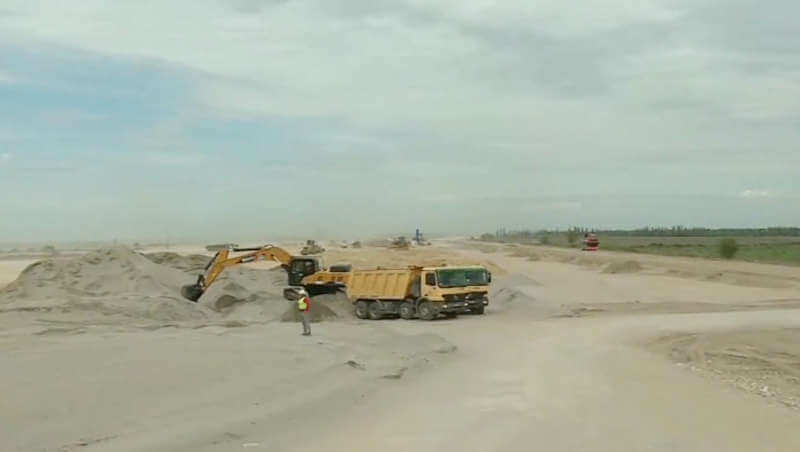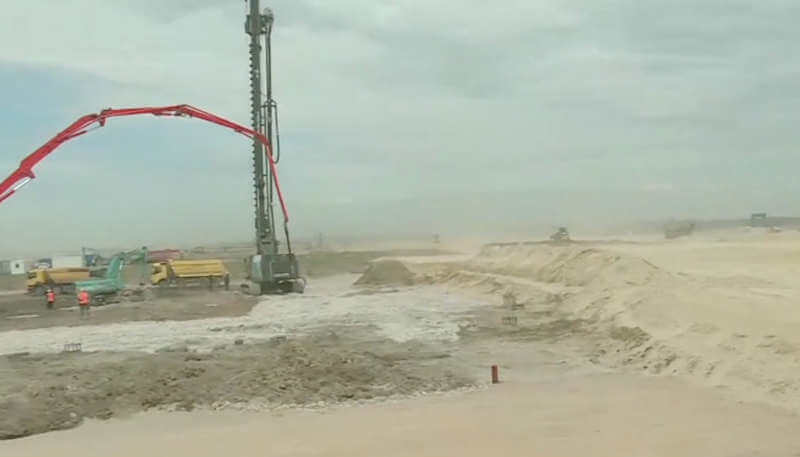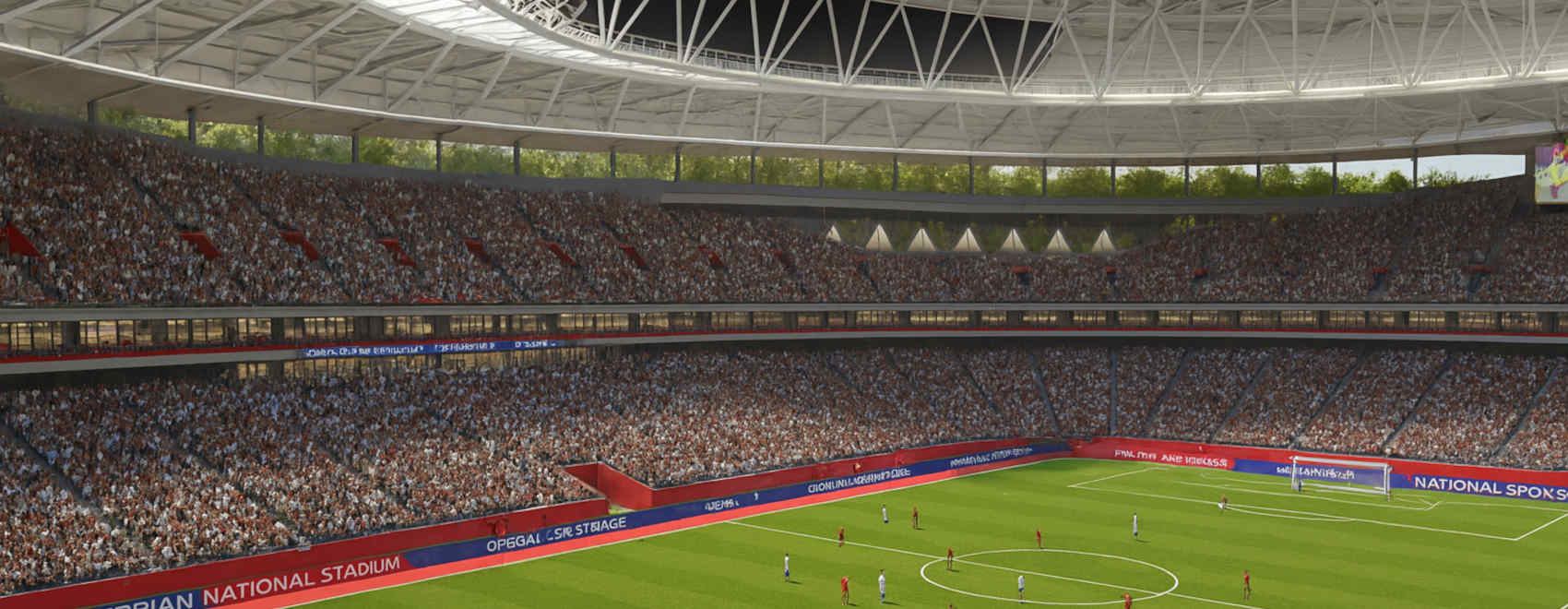On May 1, 2024, President Aleksandar Vučić marked the commencement of construction on Serbia’s National Soccer Stadium in Surčin, on the outskirts of Belgrade. The stadium, with a seating capacity of around 52,000 spectators, will be built to meet all UEFA standards and is scheduled to be completed by the end of 2026.
The National Stadium is an integral component of the Specialized EXPO 2027 project and forms part of an extensive development plan for the Surčin area, which includes the construction of the new Belgrade Fair, an Aquatic Center, and a residential complex with 1,500 apartments.
Table of Contents
Design and Architecture
The architectural design of the National Stadium is the brainchild of Spanish studio Fenwick Iribarren Architects, known for developing several high-profile stadiums, including three stadiums for the 2022 World Cup in Qatar.
The proposed stadium features a striking circular shape, a departure from traditional stadiums, with a unique green and natural facade. The design incorporates four “rings” suspended by cables, which will include garden areas, adding a touch of natural beauty to the stadium’s exterior. This innovative approach aims to create a sustainable and eco-friendly structure that harmonizes with its surroundings.
Facilities and Features
The National Stadium will cover approximately 32 hectares, including 4,500 parking spaces. The expansive area will not only serve as a venue for soccer matches but also as a multifunctional hub for various events and activities. Surrounding the stadium, there will be cafeterias, kiosks, restaurants, and leisure areas, creating a vibrant and dynamic atmosphere for visitors. Additionally, the stadium’s proximity to the river will provide access to a 100-meter-long pontoon, catering to cruisers and ships, further enhancing the stadium’s appeal as a premier destination.
Fenwick Iribarren Architects aims to make this project one of the most innovative in the football stadium design sector by creating spaces that can be used as leisure areas throughout the year. This approach will allow Belgrade’s citizens, as well as visitors and tourists, to enjoy a natural environment thanks to its landscaped facade, enhancing the overall experience of the stadium and its surroundings.
Construction Details
The construction of the National Stadium involves a complex and meticulous process to ensure its structural integrity and durability. A total of 4,300,000 cubic meters of sand will be used to prepare the ground, along with nearly a million cubic meters of rock. Approximately 20,000 tons of concrete, reinforced with 2379 piles totaling 55 kilometers in length, will be used in the stadium construction, highlighting the magnitude of the project.


Sustainability and Innovation
The National Stadium’s design incorporates several sustainable features, aiming to minimize its environmental impact and energy consumption. One of the standout features is its innovative cooling system, which utilizes four-pipe chillers to provide heating and cooling simultaneously.
This system utilizes residual heat generated during the cooling process to produce hot water for the heating circuit, ensuring efficient energy utilization. Additionally, the stadium’s design includes large thermal storage tanks to support the cooling and heating systems, further enhancing its energy efficiency and sustainability.
Surrounding Infrastructure
Preparatory work for EXPO facilities began in June 2023 and is progressing as planned. The exhibition will be held in Surčin, in an area well-connected to the Belgrade bypass and the Miloš Veliki Highway, near Nikola Tesla Airport.
There are plans to construct an 18-kilometer railway line connecting Zemun Polje, Nikola Tesla Airport, and the EXPO 2027 site. Besides the exhibition space and the National Football Stadium, the area will feature a new Belgrade Fair, an Aquatic Center, and a residential complex with 1,500 apartments.
Timeline and Completion
The construction of the National Stadium is scheduled to be completed by December 1, 2026, with meticulous planning and execution ensuring that the project stays on track. Currently, 526 workers and 260 machines are deployed at the construction site, working tirelessly to bring this ambitious project to fruition. The stadium’s completion will mark a significant milestone in Serbia’s sporting history, showcasing the country’s commitment to excellence in sports infrastructure.
Belgrade to Host 2028 UEFA Europa League Final
The National Stadium’s inauguration is eagerly anticipated, with plans already in place for the stadium to host the 2028 UEFA Europa League final. President Vučić, while inspecting the construction works, revealed this exciting news. While the decision is not yet absolutely final, Vučić expressed confidence that it is pretty much certain.
Citizens to Name the National Stadium
The public will have the opportunity to choose the stadium’s name, fostering a sense of ownership and pride among the citizens. Although President Vučić has suggested the name “Serbia,” he is not entirely certain that it is the optimal choice. As a result, he has decided to leave the decision to the citizens, allowing them to determine the most fitting name for their national stadium.
Conclusion
The construction of Serbia’s National Soccer Stadium in Surčin represents a significant milestone in the country’s sporting infrastructure development. With its innovative design, sustainable features, and commitment to excellence, the stadium is poised to become a symbol of Serbia’s sporting prowess and architectural ingenuity. As the stadium takes shape and nears completion, it stands as a testament to Serbia’s ambition and vision for a brighter sporting future.
The Specialized EXPO 2027 Belgrade, with the theme “Play for Humanity – Sports and Music for All,” will be held from May 15 to August 15, 2027. The event is expected to attract around three million visitors.


Leave a Reply